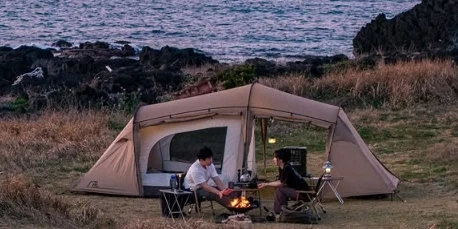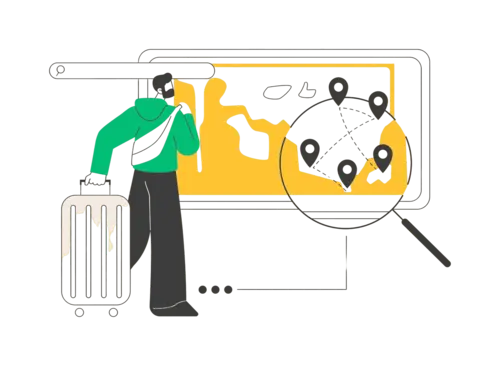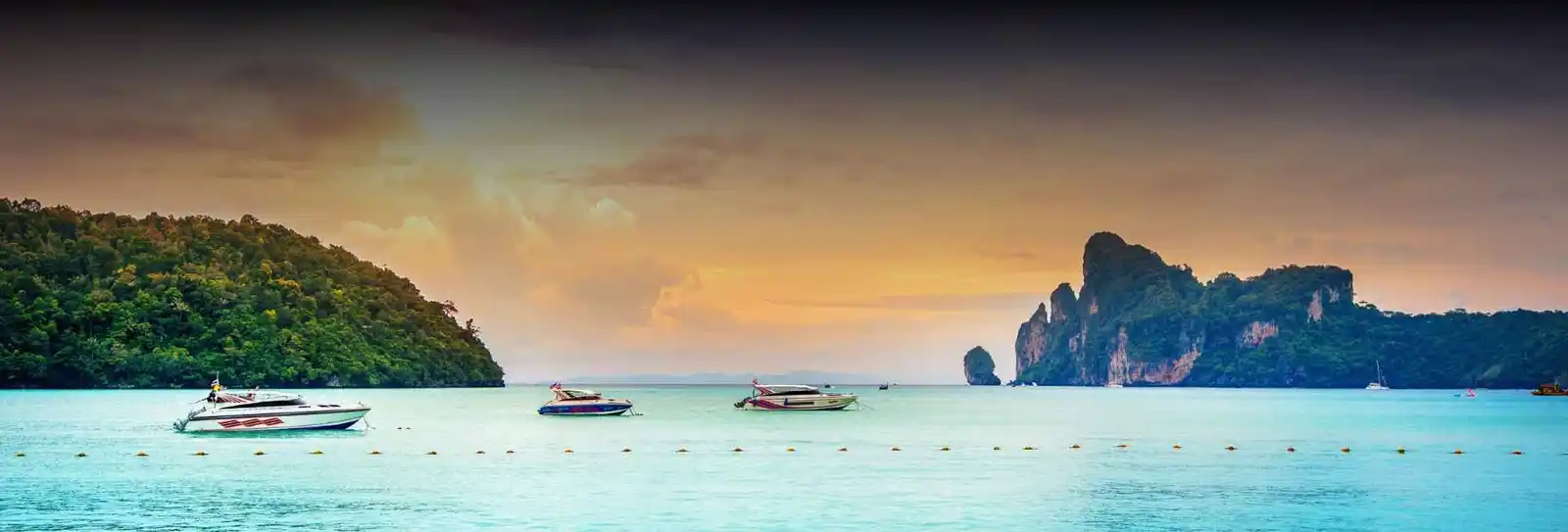
When it comes to trekking, the camping versus homestay option for rest has an uplifting effect on the trekking experience. The camping experience is quite raw and elemental, with having dinner outdoors by the campfire and staring up at a thousand stars, waking up to the fresh mountain air, and heading off to unrestricted, distant locations. It is perfect for an adventurer who prefers solitude and flexibility in his or her life, or a little more closeness with nature. In contrast, camping becomes such a task to arrange in terms of accommodation; hence, the necessity arises for preparation, lots of gear, basic camping and survival skills. A homestay offers comforts, warm hospitality, and good cultural interaction. It is an opportunity to delight yourself in the nutritious home-cooked meal, a warm bed, and insightful conversations with local people. It is ideal for those who would like short spurts of change to their trekking routine. A trekker can rest in comfort to enjoy the mountain life. Choosing the better option depends on personal taste and the difficulty of the trek through the mountains. If your trekking trails are offbeat and wild, try camping. But if your trekking is adjacent to several villages or the weather is harsh, homestays may be safe and cosy. More often than not, most trekkers use a mixture of both by camping on the trail and staying in homestays that are near the base camps for a mixed experience. So it depends on your adventure style, comfort needs, and the terrain ahead.1. Experience & Atmosphere: Camping vs. HomestayCamping: Camping is one of those raw, adventurous experiences where aliveness comes to be felt with nature. You wake up to chirping birds, rustling leaves, and splendid views. It is a peaceful, serene atmosphere for someone who enjoys solitude and wants to take a break from modern life. Sitting around a campfire, gazing at stars, and sleeping in tents can create some of the best memories of life. But with camping, you often have to make do with rudimentary facilities and sometimes adverse weather.Homestay: Homestays are comfy and culturally rich environments. The experience is, more often than not, warm and personal--you share with locals, eat local foods, and sometimes learn local customs. Perfect after trekking for an evening, the atmosphere is homelike and laid-back. Homestays generally provide basic comforts like beds, bathrooms, and hot meals, which makes it all the easier to appreciate, particularly in difficult terrains.In summary:Camping is a wild nature atmosphere.Homestay is comfort, culture, and hospitality.Depending on which of the two you wish for, it will be the deciding factor: do you want an immersive outdoor adventure or a comfortable local experience?2. Comfort & Amenities: Camping vs. HomestayCamping: Camping is a more rustic and very basic kind of experience. People set up tents, sleep on mats or sleeping bags, and carry with them the very few amenities they consider necessary: portable stoves, rudimentary toilets (if any), and no electricity. Comfort is largely contingent on weather, terrain, and your gear. It is for people who enjoy the rough-and-tumble life and a little bit of self-reliance. Others may find it difficult to endure, especially in harsh weather or difficult terrain.Homestay: On the contrary, homestays have excellent comfort levels and various other amenities. You have a real bed, a clean toilet, and sometimes running water, sometimes Wi-Fi too, and home-cooked meals. That hike was hard work, and you are going to appreciate a soothing warm shower followed by lying on a cosy bed! Most homestays offer a cup of local tea, a bit of cultural background, and directions around the area, so the added comfort is a bonus in itself.In summary:Camping: Basic comfort, scant amenities, and close to nature.Homestay: Comfortable, with all the essential amenities and cordial hospitality. If comfort is a primary concern, keep homestays in mind. On the other hand, if you're all about the adventure and don't mind roughing it, camping will leave you with memories.3. Safety & Weather: Camping vs. HomestayCamping: Camping leaves you to the whims of the weather, hence you can end up with cold nights, storms, wind, and in some areas even the risk of wild animals. Camping requires suitable gear, clothing, sleeping bags, sturdy tents, and, of course, adequate experience with local environmental features and the terrain. Carrying on in some remote areas can present safety risks and is compounded when mobile phones don't work and help is far away. It is important to know where you are camping, and only camp in authorised and certified areas, and adopt Leave No Trace guidelines.Homestay: A homestay represents a much safer and weather-proof alternative to camping. You will be sure that you sleeping in a real structure, inside, and out of the weather. A homestay can make for a very worthwhile experience in bad weather, extremes, high altitudes, and unforgiving climates. Not to mention, you may also be able to gain local knowledge on weather patterns, dangers that exist in certain terrains, helpful emergency contacts, etc. As a family, or even a solo trekker, a homestay offers that extra peace of mind.In summary:Camping: More exposure to the weather, needs skills and planning.Homestay: Much safer, sheltered from the weather and safer in bad weather.Therefore, if weather conditions are nasty (high winds, rain, snow, or if you are unsure of the area you are travelling), you would want to go the way of a homestay, no matter the cost differential. If the weather is stable and you know the area, camping is recommended.4. Cost: Camping vs. HomestayCamping: Camping is usually cheaper if you have your equipment, such as tents, sleeping bags, and cooking gear. You are also avoiding paying for accommodation and will be cooking some of your meals, which significantly reduces your overall costs. You probably find the up-front gear investment expensive, and there may be campsite fees, or if in some places, hiring porters/guides is a requirement, but generally, you'll definitely save money camping.Homestay: Homestays involve cost, but typically they include what you get: accommodation, meals, and sometimes additional amenities. When evaluating the cost, there is variation based on the homestay's location and level. Homestays usually range from low to moderate cost and are still relatively affordable when compared with hotels or lodges. The service, comfort, and food they provide often make the price worthwhile, especially considering the hassle of carrying gear and cooking (or lack of hassle due to the homestay providing it all).In summary:Camping: lower recurring monthly cost, higher upfront gear investment for only accommodation.Homestay: moderate cost, but includes meals and comfort.Camping can be cheaper if you are an experienced trekker with your gear. While homestays may be a little pricier than camping, as they include accommodations and meals, they are still a good price when you factor in comfort, convenience and lack of effort.5. Environmental Effects: Camping vs. HomestayCamping: Because camping usually occurs in the wilderness, it can have a greater environmental footprint if people do not respect the environment. Improper disposal of waste, campfires, and camping off-trail can harm delicate ecosystems. When done responsibly, such as by following Leave No Trace principles by using eco-friendly gear, avoiding unnecessary plastics, respecting wildlife, etc., we can ensure that camping can be done sustainably. The most advantageous course of action is for campers to be respectful and to think about their impact on the environment, and to disturb it as little as possible.Homestay: There is usually a smaller environmental impact per person with a homestay as the homestay fits into an existing village as opposed to camping, which disrupts and risks it. Many resources, such as water, electricity, and locally sourced food, are often consumed or used more efficiently at a homestay. In addition, many homestays take an active part in the sustainable tourism industry that follows eco-friendly practices, such as composting, solar, and organic farming.In summary:Camping: Potentially high impact if done irresponsibly; can be low-impact if done responsibly.Homestay: More likely to be lower impact due to shared resources and sustainability-on-the-ground practices.If reducing environmental impact is important to you while travelling, in almost all circumstances, your best choice should be homestays unless the camping party is made up of a group of individuals with a high environmental impact awareness, care, and desire to travel effectively.Why Book with escape2exploreWhen exploring India from Bengaluru and beyond, escape2explore stands out as a trusted name in adventure and experiential travel. Here’s why hundreds of travellers choose us for their getaways:Trusted, Well-Reviewed Local Operator: escape2explore has gained the trust of thousands of content tourists all over India. With persistent positive feedback and an unblemished reputation for delivering quality experiences, we assure you that your experience will be hassle-free, memorable, and value-packed. Our insider local knowledge guarantees that you will always be in safe hands.Seasoned Guides: Our trips are led by friendly, trained, and professional guides who are passionate about the outdoors and your safety. Whether it's a beach trek, a cultural tour, or a spiritual walk through temples, our team knows the terrain, the stories, and how to make each moment count.Safe & Curated Itineraries: Your safety is our number one priority. Our tour packages are thoughtfully crafted with safety measures, researched accommodations, and easy travel arrangements. We take care of the details so you can have the experience hassle-free and worry-free.Unique Experience That You Won't Find Anywhere Else: With escape2explore, you discover more than the tourist attractions. We go off the beaten track with hidden beaches, unusual treks, offbeat cultural destinations, and true interactions.Read: Top 10 Things to Do in Chikmagaluru |Summer Treks in India |Adventure Accors India|Kabini Safari| Monsoon Treks in India


